:: MISCELÁNEA. Didáctica. Págs. 507-525 ::
A Corpus-based Proposal for Teaching a Translational Habitus: Initial dialogues with Bourdieu’s sociological approaches
-------------------------------------
Talita Serpa
Paula Tavares Pinto
Diva Cardoso de Camargo
São Paulo State University (UNESP), São José do Rio Preto, São Paulo / Brasil
-------------------------------------
There is a growing body of literature that recognises the importance of Social Sciences in Translation Studies, such as the discussions surrounding the translational habitus, developed by Simeoni, Wolf and Inghilleri. In our research, we associate these ideas to corpus methodologies to analyse terminological usages as part of a professional behaviour. We hypothesise that when translation students observe the most frequent terms extracted from a parallel corpus as well as their keyness and contexts prior to starting their translation, they replicate the same translational strategies in their texts, which can indicate the acquisition of competencies related to a particular habitus.
palabras clave: corpus-based translation pedagogy, translational habitus, teaching theories, competencies, terminological usages.
Una propuesta basada en corpus para enseñar un habitus de la traducción: diálogos iniciales con los enfoques sociológicos de Bourdieu
Un creciente volumen de literatura especializada reconoce la importancia de las ciencias sociales en los estudios de traducción, como los debates en torno al habitus de la traducción, a los que han contribuido Simeoni, Wolf e Inghilleri. En nuestra investigación asociamos estas ideas a metodologías de corpora para analizar los usos terminológicos como parte de un comportamiento profesional. Presumimos que, cuando los estudiantes de traducción observan, antes de enfrentarse a un encargo de traducción, los términos más frecuentes extraídos de un corpus paralelo (además de considerar si son o no términos clave y sus respectivos contextos), reproducen las mismas estrategias de traducción en sus textos, lo que puede indicar la adquisición de competencias ligadas a un determinado habitus.
key words: pedagogía de traducción basada en corpus, habitus de la traducción, teorías de la enseñanza, competencias, usos terminológicos.
-------------------------------------
recibido en abril de 2020 aceptado en febrero de 2021
-------------------------------------
INTRODUCTION
This research integrates the concept of translational habitus (Wolf, 2010; Gouanvic, 2005; Simeoni, 1998; Inghilleri, 2005) into the agenda of Translation Pedagogy. We consider this integration a relevant issue in the perception of common strategies or characteristics frequently used during the translational process. Furthermore, we recognise the presence of translational habitus in the analysis of procedures involving the development of translators’ competencies (Hurtado Albir, 2005) during their training with corpora (Zanettin, Bernardini, Stewart, 2003).
To start this discussion, it is necessary to understand the concept of habitus, which comes from Bourdieu’s theories. According to the author (1982, 1983), habitus is a system of durable provisions which, integrating all past and new experiences, sets a matrix of perceptions and actions, which allows infinitely differentiated tasks. It happens through procedures of transferences in which analogue schemes, developed to solve problems in similar ways or with corrections, are shared among members of a community (Bourdieu, 1983: 65). Therefore, habitus refers to behavioural standards acquired by individuals during their social and professional interactions. These patterns are recognised through the most prevalent attitudes and through the competencies to execute a profession.
In Sociology of Translation, authors such as Wolf (2010) and Simeoni (1998) point out that the translational habitus contributes “(…) to the internalisation of a (…) behaviour”, which refers to the translator’s mindset, a result of a personalised social and cultural response to collective experiences. Habitus, thus, mediates the personal experience and the social world.
We can also say that translators acquire habitus via "inculcation in a set of (…) practices" (Inghilleri, 2005:70) and that professional habitus and practice affect each other. Besides, much of this mutual shaping takes place via communication, via discourse and via educational procedures.
Consequently, habitus is related to actions we continually and frequently repeat. It shapes common behaviours according to the acceptance by the community or by the groups that execute standard functions, such as a profession. Therefore, in this paper, we intend to explore theories and methodologies in Translation Studies, supporting the verification of some aspects of this translational habitus.
Daniel Simeoni (1998) tries to connect the category of habitus to systematic models of analysis, associating it to the concept of norms proposed by Toury (1978) and assuming that the translator's habitus is collectively determined, but, at the same time, determinant of agents and products.
Toury’s proposal (1978) considers that the target society and the translator have a role in the source text (ST) decomposition and in the translated text (TT) recomposition. Thus, it is necessary to evaluate and validate the regular behavioural patterns in search of a standardization (which we understand as the habitus).
In this regard, we observed that the concept of habitus has some similarities with ideas explored by Corpus-Based Translation Studies (Baker, 1995; Camargo, 2007) as well as by certain studies on Terminology (Barros, 2004; Bowker, 1999) and Socioterminology (Faulstich, 2002). If habitus is a pattern, a behavioural standardisation, a regularity, then, the consistency and high frequency of some terminological uses in a specialised parallel corpus would be a useful tool to study this phenomenon.
Having this in mind, we believe that the use of terms by authors and translators is a way to show how translational habitus works, mainly in its lexical and terminological aspect1. The terminological content could be one possible instrument to help trainees to develop some of their competencies as part of a professional habitus.
In this sense, Translation Pedagogy approaches, such as Díaz Fouces’ theories (1999, 2001), seek to create teaching methodologies which observe translational competencies based on parallel corpora and focusing on the use of pragmatic aspects by translators. In this pedagogical approach, students would be able to codify and systematise information present in texts, to serve as a pattern of practice, therefore generating criteria for teaching and learning features which define a particular habitus.
In our research, we assumed the dialogue among the concepts of habitus, pattern, regularity and drove to an initial educational experiment that could be performed in the classroom. Thus, firstly, we analysed a Portuguese English parallel corpus of the work Maíra (1976) written by Darcy Ribeiro and translated by Goodland and Colchie (1985). In our analysis, we suggested that the examples of terminological uses in STs and TTs could be aspects of a translational habitus, focusing on an anthropological framework2 due to the frequent usage of these terms in contexts (Serpa, 2017).
With the results, we proceeded to the second part of our investigation, which drew on certain pedagogical theories that propose that, by acquiring translation habitus, students would reproduce patterns of behaviours and develop similar competencies when placed in an educational system where a habitus is taught (Perrenoud, 2002).
Our hypothesis highlights that when translation students face the most frequent terms extracted from a parallel corpus as well as their contexts, they replicate the same translational strategies in their texts. Therefore, the results of this paper support the idea that students who observed the patterns of lexical usage in the translated work Maíra (1976) reproduced these patterns in their own TTs.
Brief conceptualizations of Corpus Linguistics and Terminology
Baker (1995) considers corpus analysis as a rich source of descriptive-comparative material that can assist learners in identifying differences between the language of translation and the natural language. The author presents her conception of corpus and her preferences for using computer analysis. In her words, “a corpus is any collection of texts that are held in electronic form and analysed automatically or semi-automatically" (Baker, 1995: 226).In Corpus Linguistic studies, the use of corpora involves the observation of typical probabilistic data. Berber Sardinha states that: “[...] frequency is an inseparable attribute of the word, once it reveals its common observed occurrence. Frequency (high, low, intermediate), therefore, has a defining role in the word, giving it a trait as inseparable as meaning”3 (Berber Sardinha, 2004: 162-163).
For the analysis of patterns and standards used by translators in their TTs or by authors in their STs, frequency reveals itself as a great instrument, considering it shows the combinations and collocations that are related to the users’ behaviours in the face of the social and linguistic rules established to communicate.
Tognini-Bonelli (2001) suggests that the occurrence of words happens in a set of collocational patterns and also that the frequent combination of words present a network of similarities in a linguistic pair. These collocations are representative of specific characteristics in a corpus, which, according to Berber Sardinha (2004), is the basis of the concept of keyness. This concept determines the most specific words in a text and compares them statistically with languages in everyday use. The keyness demands reference corpora4 that are compared to the main corpus so that it generates a list of keywords which clarifies specificities of an author or translator.
In our study, we correlate these concepts with proposals from Terminology, such as the idea of a term, which consists on the employment of a lexical unit within a particular body of language (Bowker, 1999). Barros (2004) states that the term “[...] is a model of lexical realisation in the text. The feature of a term is given by the fact that it designates a specific concept in a specialty domain” 5 (Barros, 2004: 42).
Barros (2004: 105) also argues that the use is a decisive criterium for the definition of a term in a phrase, once it is necessary to take into account the stability of the relationship between the syntagmatic sequence and the meaning of the word. The frequent use of a term in a given syntagmatic sequence leads to a strong semantic-syntactic interpretation and to a memorisation by its users.
However, despite this stability, in Terminology, it is also possible to find some variationwhich consists on the unstable sociocultural element of language usage. This phenomenon reveals that "terms, in linguistic and social environments, are entities which are under variation and change, and that communication between members of the society generates interactional concepts for the same term or even different terms for the same concept" (Faulstich, 2002: 70)6.
With regard to the translational process, these factors favor the establishment of a correlation between possible changes in analytical perspectives from one language to another, by identifying the alternation of the functions that the variants assume within the linguistic and social communities. Consequently, terms are closely related to the position they assume within a social and cultural system, their performance is part of an entity of a pragmatic and empirical nature.
Furthermore, among the variations during the translational process for terminologies, we also observe the use of loanwords that are borrowed words from foreign languages employed in the social context of a target language (TL). Thus, the definition and use of a loanword vary depending on the social, linguistic context in which it is employed (Faulstich, 2002: 77).
In this context, we believe that working with corpora involves the possibility for translation trainees to come into contact with specific languages and develop their relationship with them. We also understand that a corpus may be a tool to identify translational habitus and that the relation established between STs and TTs is a situation in which we can observe this phenomenon, mainly when we highlight one of its aspects, the terminology7.
In a corpus, the trainees may come across several interpretations of the same term, used by the same author (of the ST which they are going to translate) and by different translators. Besides, they can verify the usage of specific words produced in source and target languages, as well as between TTs translated by professionals with different social roles.
Moreover, there is also duplicity of the phenomenon, namely: 1) the corpora, as practical and empirical representativeness of a habitus which involves acceptable choices and provides the basis for the translation of STs; and 2) the STs (and TTs) as representations of a smaller core of action of the same terminological set. There is, therefore, a feedback system of terminology and translation strategies, which, without the aid of Corpus Linguistics, would be difficult to be visualised and incorporated by the students’ habitus.
The anthropological field as the terminological basis for our parallel corpus: why is this corpus representative?
Concerning the corpus selected for this study, we chose to use a small corpus, following Sinclair’s proposals (1991) in which he points out that approaches related to small and medium corpora raise important issues, such as differences in register and textual genre. For a terminology, the theorist suggests that a small corpus delimits the discursive domain or the addressed topic, whose analysis, in turn, provides information on cultural, linguistic and behavioural variation.
In the preface to the work Small Corpus Studies and ELT: Theory and Practice (2001), by Ghadessy, Henry and Roseberry, Sinclair highlights that a corpus, even though considered small, is interesting, since the smaller size allows to decode less frequent and more difficult translation characteristics for translation practice. Beaugrande (2001) differentiates two types of small corpora that favor the present investigation. The author suggests that the corpus of apprentices and the corpus of professional areas may be smaller as they favour the verification of behaviours, records, lexical recurrences and specific topics in Translation Studies, functioning as a way of exploring how meanings emerge and evolve in context (Beaugrande, 2001: 23).
Therefore, we selected Darcy Ribeiro’s literary work, which represents, in the Brazilian social environment, one of the most important analysis about our anthropological, educational, political and sociological problems.
Darcy Ribeiro promotes new parameters for the constitution of a people's identity, reformulating objects, terms, hypotheses and environments, which permeate theoretical writing and gain an air of Literature (we could say “anthropological literature”). In terms of academic essay, he subdivides Brazil into categories, showing the influences of human nuclei in their specific aspects. When moving to the literary field, the author, likewise, observes the valuations of Brazilian social groups, referring, mainly, to the transculturation of Indigenous, Black and Mestizo peoples.
There is a reuse of anthropological knowledge in the literary work, so that the author does not perform a total disconnection between the two textual forms, but rather associates the social facts observed among peoples and creates characters, settings and narratives that allow exemplifying, quite clearly, the anthropological phenomena pointed out in his theoretical productions, such as, for example, transculturation, animosity and acculturation.
In this sense, the translational process of his intellectual production is a great responsibility, even for experienced professionals. It is not enough knowing linguistic contents and/or vocabulary; it is necessary to be aware of the contexts, the habitus, the sociocultural characteristics addressed by the researcher-literate, in order to emphasize his critical tone, the proposals for change and the commitment in the search for the homogenization of the Brazilian people.
Habitus and pedagogical theories: possibilities for teaching and learning a professional behaviour based on competences and corpora
The concept of habitus has been frequently used within the pedagogical-instructional sciences, linking habitus to the learning process. Bourdieu considers habitus and practice together and establishes teaching as a systematic procedure to promote awareness of standardised behaviours in a given context. According to the author, habitus has its beginning at school, which invests in the function of creating individuals endowed with a system of (unconscious or deeply internalised) schemes, which constitute their culture, or rather, their habitus (Bourdieu, 1982, p. 346).
Perrenoud et al. (2001) understand that the students' learning exercise is based on to the relationships established in collective human nuclei that are developed in the academic environment, crossing the limits of pedagogical planning and producing a social, pragmatic and analytical cycle of action.
The authors (2001) propose that a habitus associated with the principles of a profession consists of:
- Routines that the professional builds through his/her practice;
- Uses of explicit representations capable of directing an action;
- Rational actions (uses of knowledge allied to reflection);
- Activities defined by social standards;
Habitus represents a competence-based approach to teaching a professional routine regulated by socio-cultural values, which, in turn, are established by a given community. Besides, it is possible to observe two specific scenarios in which one can encounter a professional habitus: 1) the reiteration of formal and shared knowledge, and; 2) the articulation of new strategies of an individual, as a member of a group, and the proposition of options to alter the conduct of the collective.
Wolf (2010) observes that habitus in the context of translation is primarily shaped in training institutes. She suggests it is the main socialising factor for the agents’ future community practice and comprehends that training students in Translation Studies should consider their role in and for society.
Considering translational and teaching approaches to future translators, we also follow Hurtado Albir's work (1993) who composed a list of general teaching and comprehension objectives based on:
- The contents of the working style: use of dictionaries, processes of translation.
- The act of contrasting the pair of languages: considering lexicon, grammar, and textual function.
- The selection of translation strategies based on the style of the text.
Creating a notion of translational competence, Hurtado Albir establishes a strong teacher-training program based on Translation Pedagogy (Hurtado Albir, 2005). In this area, translational competence is a series of “expert knowledge, integrated by a set of knowledge and skills, which distinguishes the translator and sets him/her apart from other bilingual speakers who are not translators” (Hurtado Albir, 2005, p. 19).
Scholars from the University of Barcelona developed the group Procés d'Adquisició de la Competència Traductora i Avaluació (PACTE). Their members suggested six sub-components of translational competence: communicative competence, extralinguistic competence, professional instrumental competence, psycho-physiological competence, the competence of transference and strategic competence (PACTE, 2000, 2001, 2002).8
PACTE's further studies (2014, 2015) show that the concept of competence evolved and some analysis started to be made with the use of corpora resources for translation teaching (Rodríguez-Inés, 2013). Consequently, in our research, we believe that, by using corpora as a teaching material, we would allow the students to focus on potential language standardisation, mainly in regards to speciality language and terminology. This hypothesis seems to create a parallel with translational habitus teaching and learning procedures since both theories present the comprehension of shared conduct with the observation of standards and the formation of common competencies.
Based on Zanettin (1998) studies, in which he uses corpora of STs and TTs, we believe that we could observe translational habitus during students' training. It would help learners reflect upon their experiences, language skills and communities presented within the texts. Through this process, students begin to learn previous strategies adopted by professional translators. By observing the standards set by professional translators in the texts that compose a corpus, students can reflect upon their creative processes and about their procedural competencies of translating using the same choices and replicating some professional behaviours.
Besides, Corpus Linguistics enhances competencies in pragmatic terms, as students can compile corpora and observe language in use. For Varantola (2003), the use of corpora contributes to the acquisition of two sets of competencies:
- Compilation of corpora, which involves:
- Criteria for the formulation and construction of corpora;
- Search and selection of strategies;
- Sources of awareness for the compilation of reliable corpora;
- Access to appropriate and relevant corpora;
- Contact with software for compilation and analysis of corpora;
- Integration between word processing tools and corpora processing tools;
- Use of the information provided by corpora to favour:
- Deductive skills arising from corpora research;
- Use of previously compiled corpora to obtain information on translation criteria;
- Evaluation of corpora and competencies to make translational decisions;
- Knowledge related to the management and use of corpora;
Within this framework, we connect Corpus Linguistics and Terminology. Bowker (1999) supports that working with corpora is a way of acknowledging the preference and repetition of specific terms of scientific and technical language used by translators. According to Bowker, students need to be aware of how specialized texts create significant obstacles for translators, as each text requires a different way of interaction with lexicon and terminology. Therefore, the author emphasizes that these patterns would show the standard behaviour adopted by translation trainees, which establishes a different relationship with universal languages and specialized ones.
By using corpora as an instrument to the observation of linguistic and cultural phenomena, we can recognise and analyse some terminological and lexical behaviours that constitute the professional translational habitus. Translators under training have the opportunity to consider professional translations, as an opportunity to discuss with other trainees the selection criteria for developing a corpus in order to look for solutions aligned with a set of behaviours.
Translational habitus and terminology in translation training classes: a corpus-based approach
With this teaching approach, we developed the hypothesis that students would reuse terms previously seen in TTs performed by professional translators, such as Goodland and Colchie. We firstly observed aspects of a translational habitus focusing on terminological usages and frequency of terms in a parallel corpus and developed lists of frequency and keyness for terms as well as excerpts with these terms in context. These materials were prepared and organised to be part of our pedagogical exploitation.
In a second stage, we held six meetings with 15 students9 of a Translation Training Course in a Brazilian Public University. The course lasts four years and allows students to act as translators in the following languages: English, French, Italian and Spanish. During our research, we performed activities in the disciplines called Translation Practice II and Translation Practice III, which are offered respectively in the third and fourth years.
We promoted a methodology in which we interchanged theoretical and practical classes, using the scope ofcorpora, norms and terminology studies, as well as Darcy Ribeiro’s work.
We worked with the translation of the chapter A mirixorã e o sariguê by the learners. It was chosen because it is rich in terms and represents the conclusion of the Darcynian work. Such translations were evaluated in the classroom, mainly with regard to the terminological option of the learners that were verified with the help of WordSmith Tools. We believed that, in this way, we would produce the recognition of habitus in the translation of typical Brazilian cultural factors, related to the formulation of terms in ST and TT for this anthropological theory.
We started from the conception that the terminological set reveals the recurring professional behaviours, which can be understood and used by the translators and by the apprentices in the elaboration of their TTs, with the help of Corpus Linguistics.
We emphasized that the higher the consciousness that translators achieve in relation to the behaviours contained in STs is, the greater will be the independence that TTs have in target society. We believed that this perception can be identified from the use of keywords and from the frequency of terms. With the corpus as reference, we tried to present to students how translation can achieve different theoretical proportions and interpretations, especially when the translator recognizes his social role and his ability to produce meanings through the construction of his own habitus.
With this in mind, we outline some possible topics that we present in the Translation Practice classes in order to broaden the range of learners’ knowledge and to provide students with subsidies for raising their awareness and recognizing the social impact of their terminological choices, especially in the field which concerns the areas of Social, Human and Literary Sciences.
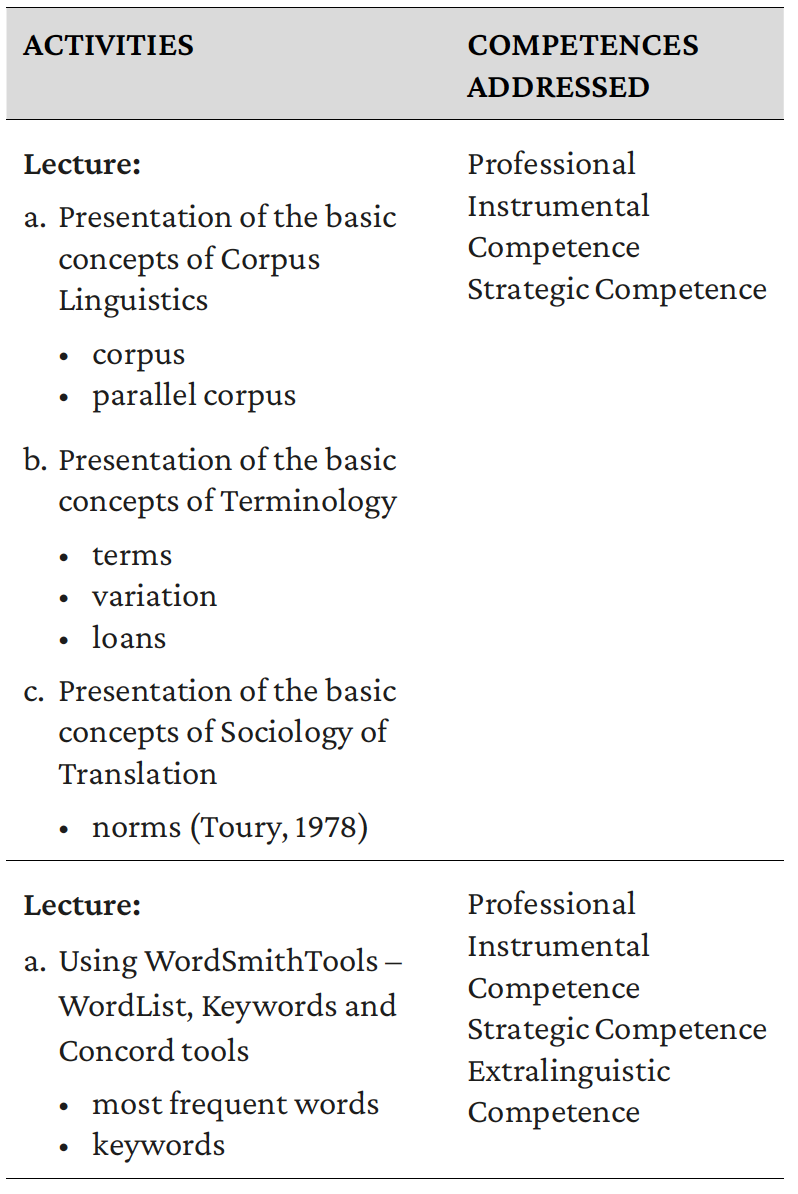
Table 1. Themes about Corpus Linguistics. Source: Created by the authors
In this first step, we presented to the apprentices the factors related to the theoretical-technological nuclei concerning corpus-based research, terminological training and the use of computational tools to analyze the texts in different areas.
With this, the translators in training were able to start obtaining the necessary competencies to deal with specialized languages, being able to:
- recognize more frequent terms in Target and Source languages;
- list possible translation options;
- organize their own word lists;
- formulate part of the awareness about the process of terminological variation and loans.
In a second step, we turned to a set of practices and activities related to the teaching of skills that emphasize cultural themes, which allows the principle of students' awareness of the existence of social values dissociated between theoretical and terminological production in Brazil and abroad.
In a third moment, we started to address questions about translation behaviours and the social role of the translator and the TT. In the scope of our research, we highlighted the factors that make up the translational process for the Darcynian Anthropology. Below, we present Table 2, with the activities proposed for the possible formation of a habitus for the translation of Anthropological works.
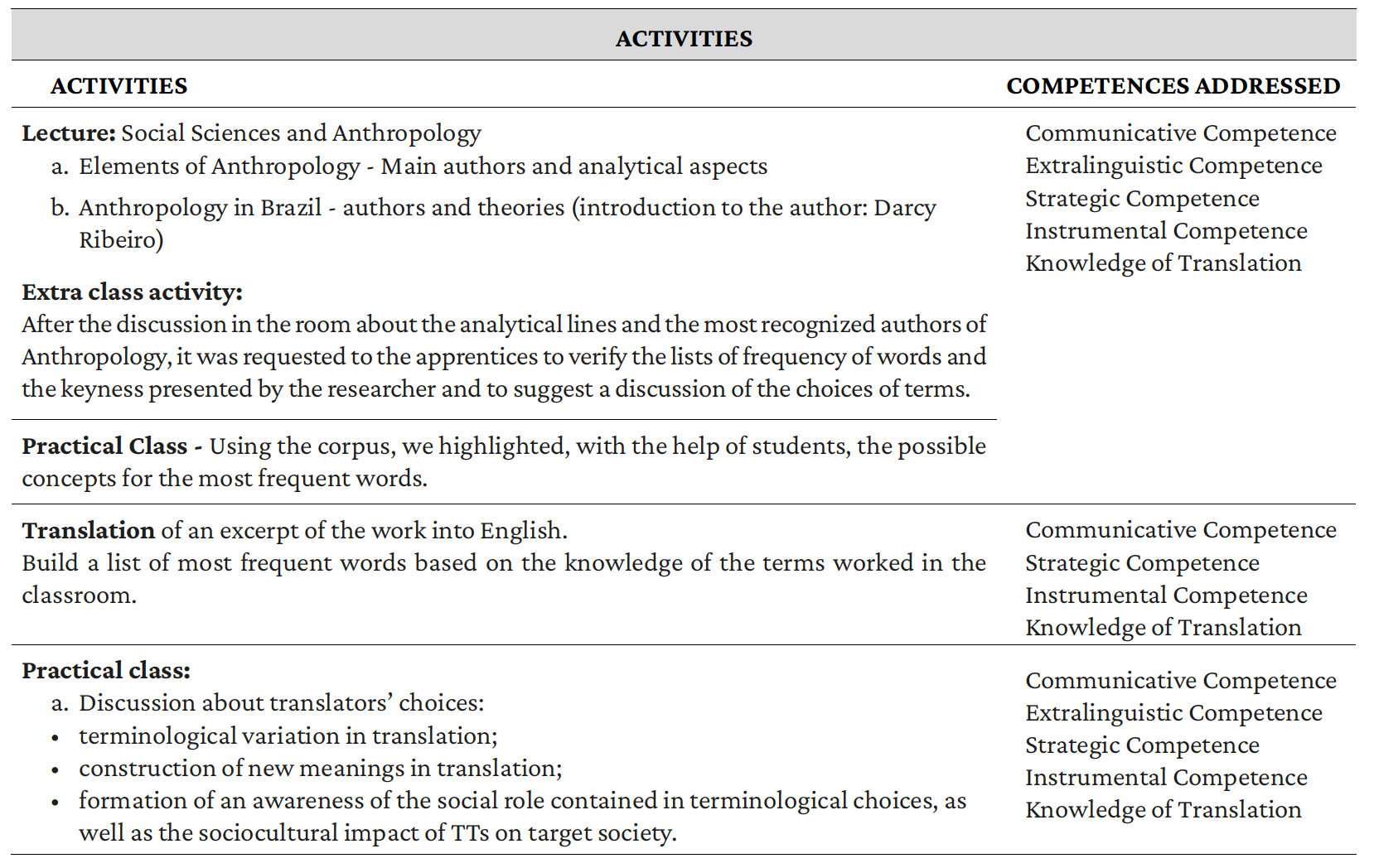
Table 2. Habitus for the translational process. Source: Created by the authors
We structured the classes as shown in Table 3:
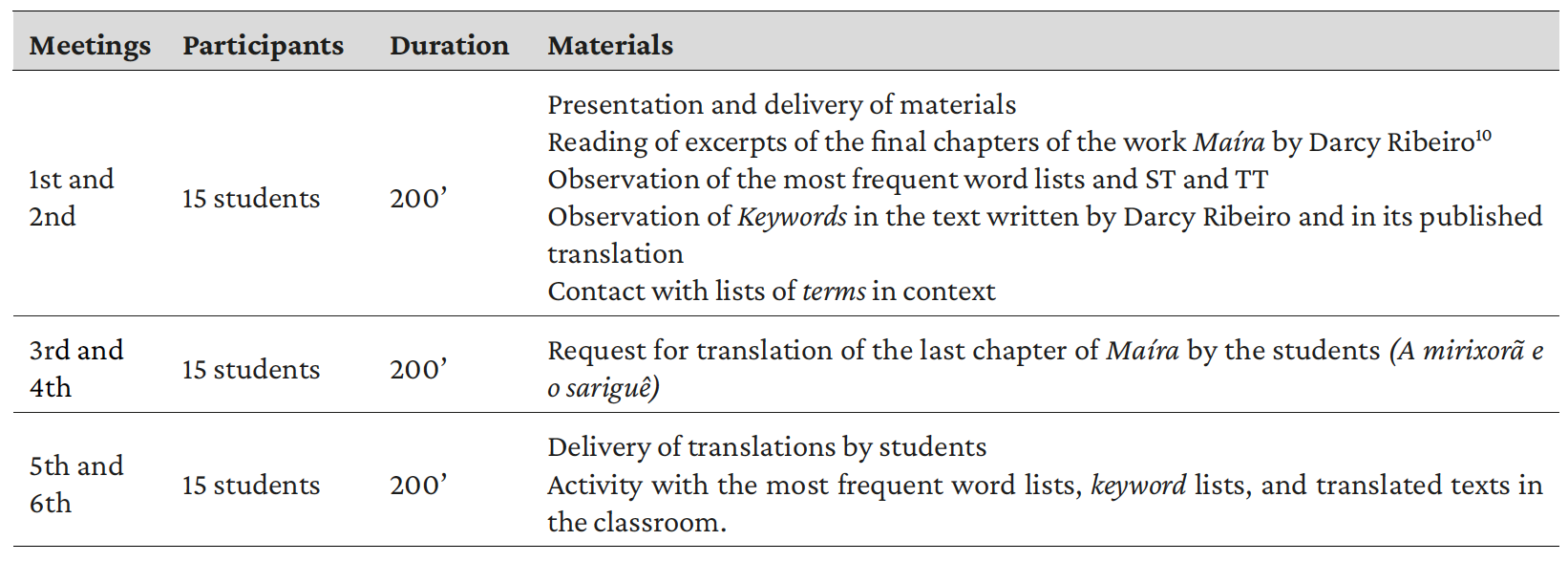
Table 3. Steps for the activities with the translation of Maíra. Source: Created by the authors
The first stage was devoted to selecting the most frequent words and keywords in the ST, which was the last chapter of Maíra in Portuguese, and in the published translated text, in English. After the compilation, we organised them in lists to be presented to the students11.
The most frequent words12 in Portuguese and English are shown in Tables 4 and 5 below:

Table 4. Ten most frequent words from the ST A Mirixorã e o sariguê13. Source: Created by the authors.
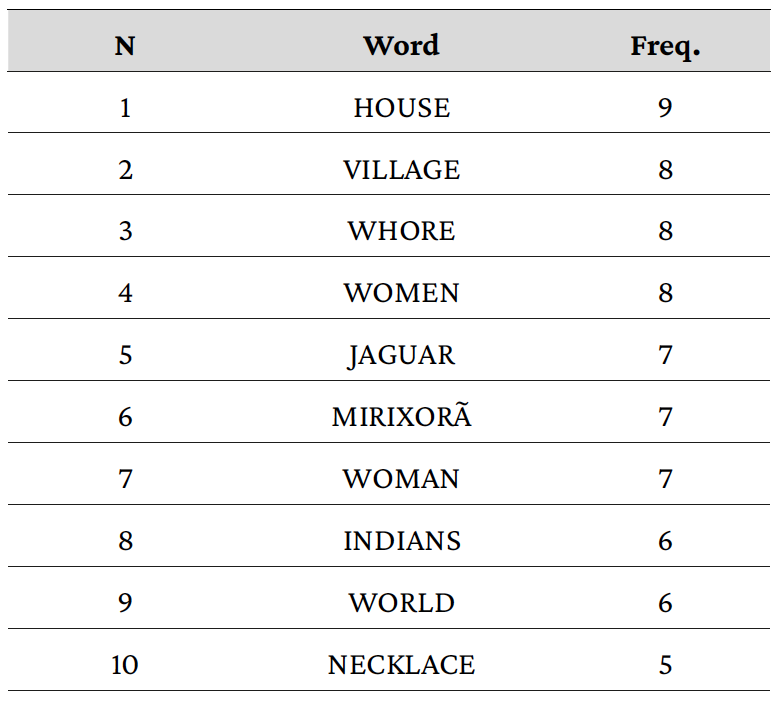
Table 5: Ten most frequent words from the TT “The Opossum and The Public Woman”. Source: Created by the authors.
We selected not only frequent words, but also the most statistically relevant words, or keywords, in Portuguese and in English, as shown in Tables 6 and 7 below:

Table 6: Ten keywords from the ST A Mirixorã e o sariguê. Source: Created by the authors.
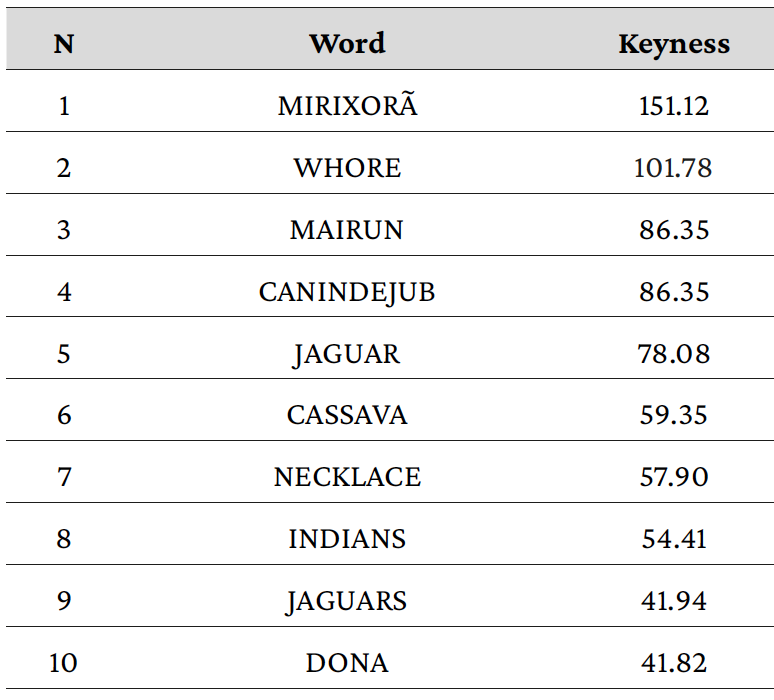
Table 7: Ten keywordsfrom the TT "The Opossum and The Public Woman". Source: Created by the authors.
We worked in the classroom with the correspondence between the most frequent words and keywords in Portuguese and English, which had been extracted from the parallel corpus. By recognizing these words, we believe the students amplified their competencies once they had had contact with elements that constitute a professional knowledge about terminological sets and their association to the instruments of Corpus Linguistics and translational habitus.
Through activities like the ones previously described, the students realise that they deal with different levels of habitus that are part of the development of a translational competence and note the importance of setting a relation between linguistic, cultural and terminological knowledge. They also understand the need to observe patterns of choices that perpetuate values which are present in the language and assume a "political", "social" and "ideological" characteristic, transforming the translator into a modifying agent (Serpa, 2017, 2019).
During the classes, we also approached the interactions established among the terms within a complete text, showing combinations and contexts. Tables 8 and 9 present some examples of the word "mirixorã", in context, in Portuguese and English:
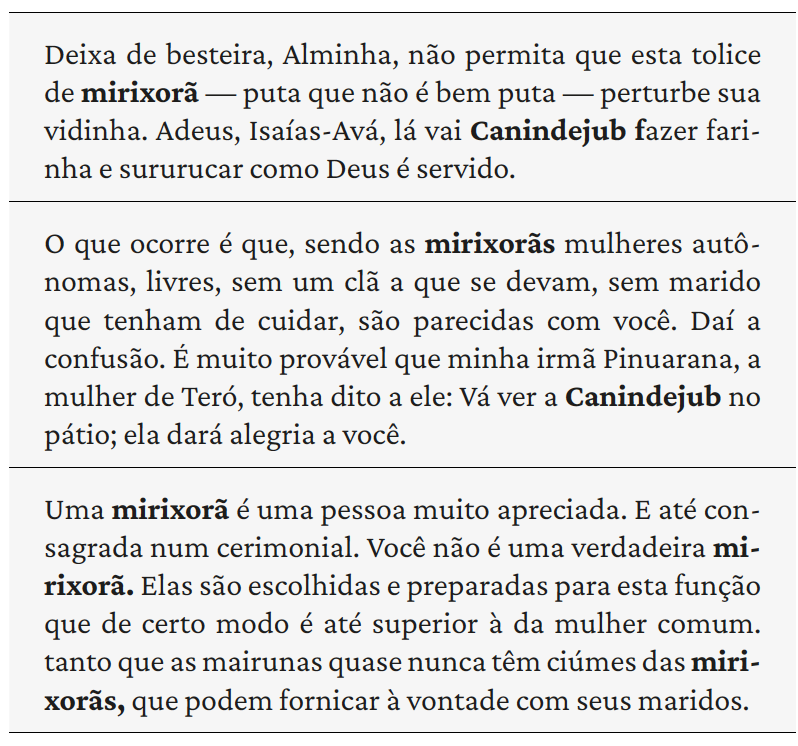
Table 8: Anthropological terms in the ST. Source: Created by the authors
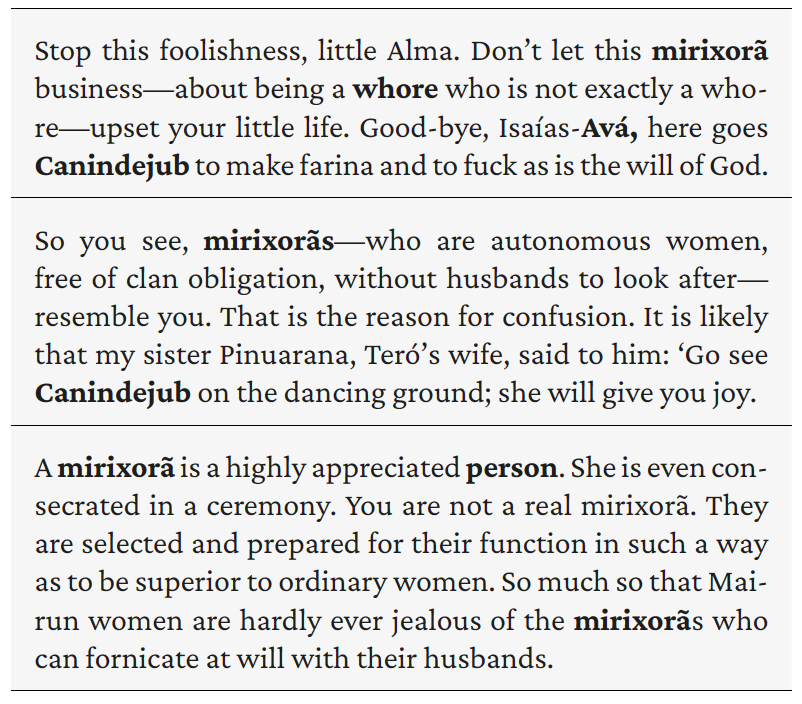
Table 9: Anthropological terms in Goodland and Colchie’s TT. Source: Created by the authors
The excerpts in Portuguese and English were presented to the apprentices so they could use them as a source of research before completing their translations, so that they could compare their choices with those of the published translation and observe if they had chosen very different options or would prefer to change their strategies. It was also possible for them to observe that some terms, which may be related to social functions in Brazilian cultural groups, were translated by loanwords.
Associated with the loanwords, the use of the lists of frequent words and keywords and some excerpts extracted from the TT also allowed the verification of variation as a phenomenon related to the incorporation of new terms.
In Table 10, we can see the approximation established by the translators between loanwords and other terms that explain the meanings of such uses.

Table 10: Loanwords and variation in Goodland and Colchie’s TT. Source: Created by the authors.
When translators face terms related to culture, they devise a relational behaviour, promoting, at first, the loanwords based on the ST, and then associating them with words that explain the entire meaning, as, for example, in the case of "Anhangá", that is, the name that the Tupi Indians gave to the spirits wandering around the Earth after death. According to legends, these ghosts took the form they wanted, even though they preferred the figure of a fiery-eyed deer with a cross on its forehead.
The professional translators chose to articulate the loan to the terms in TL “evil spirit” and “devil”, which represent the dominant reading of European peoples and their vision of myth and indigenous religiosity. With these pieces of information, the students questioned the terms used in the anthropological language and observed them in relation to other terms in context. Recognising that the text to be translated is part of the assimilation of a habitus, and mediation based on corpora could favour the deep understanding of specialised productions.
By observing the terms in context, the students establish correlations and can deal effectively with the ideologies they are going to translate in the future. By knowing how the area is constituted, learners can understand how the terms are allocated and reallocated in context.It is not just about observing how professionals translate a term, but also about knowing (i) the themes of the ST and the importance of terminological nuclei; (ii) the frequency with which the texts of the same author are connected through their terminologies; and (iii) the works that were written by authors that support or demystify theories by using terms, words, specialised lexicon co-participated by groups of social scientists, anthropologists, sociologists, historians.
We analysed the choices and uses of the translators in training through the excerpt worked in class, after dealing with the corpus of Anthropology, consisting of the texts in the source and target languages. We drew a comparison, trying to highlight the impact of using corpora as an integral part of the translators' educational process.
From the perception of experiences acquired based on the work of the group of professionals, learners can compose a set of actions or reinterpreted choices, which make up new TTs integrated to the translational habitus system. The displacement of learners' options, according to Bourdieu's (1982) and Perrenoud's (2002) theories, occurs within a parameter of possibilities elaborated by the group, accepting or refuting some lexical and terminological preferences within an agreement.
Thus, at first, we evaluated the relationship of the students as a group with the products developed with corpora, such as the lists and contexts, establishing a continuous community bond of decisions. Subsequently, we examined the students' work, to support the existence of a recognized habitus they can observe with this use of data extracted from a parallel corpus.
We analysed the proportionality of the learners' choices as well as the impact of the terminological items they intensely used as members of a cultural, social and professional group during the time they were translating the texts. In Table 11, there are the ten most frequent words and ten keywords in the learner corpus composed by the TTs produced by the students.
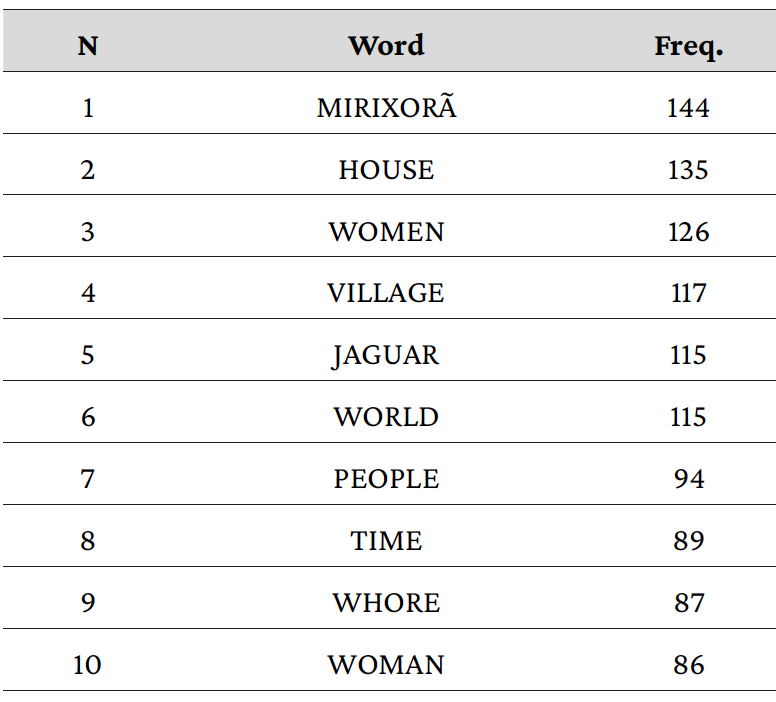
Table 11: Ten most frequent words ofthe learners' TTs. Source: Created by the authors
Among the most common words, we can see that students kept choices in English that were similar to the terms used by the professional translators, such as the terms: house, village, whore, women, Jaguar, mirixorã, woman and world. The differences in the frequency of terms are established by concepts such as people, time, Indians and necklace, which appeared among the most frequent words in the professional translation for Maíra.
If we evaluate habitus as the conditions underlying certain translational decisions (Wolf, 2010), then, the students can be able, with the examples in a parallel corpus, to understand why some strategies were adopted, and they can also understand the translation as the result of a social process that is dependent on group decisions.
The use of a corpus-based approach emphasises this factor. As our research illustrates, it clarifies and elucidates questions concerning some linguistic, lexical, terminological factors that permeate the human and cultural relations that are the subject of Anthropology.
Bourdieu's works (1982, 1983) suggest that habitus is based on the reuse and repetition, so we also observed the keyness index for identifying the conduct of Translation learners. The following Table 12 shows ten examples of keywords in students’ TTs:
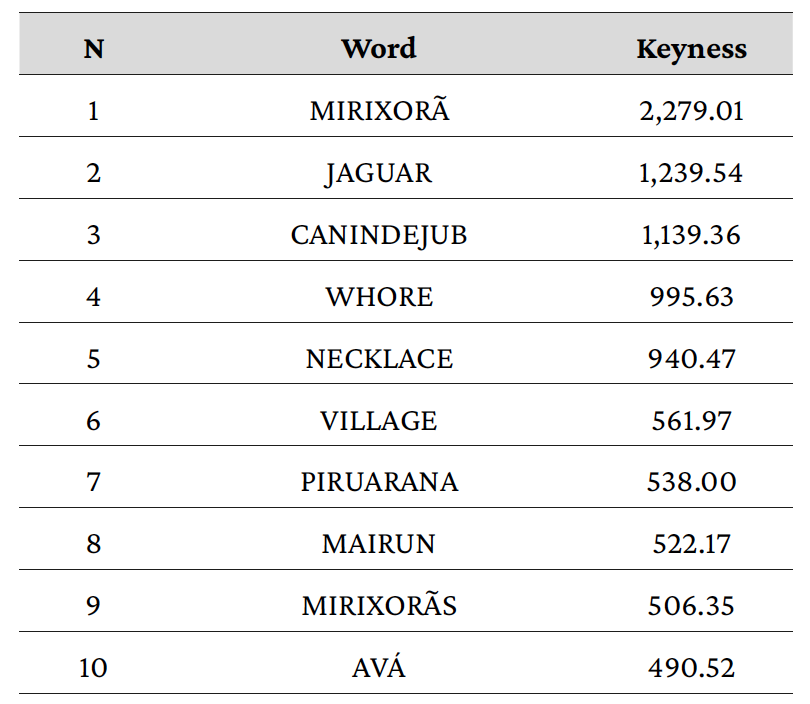
Table 12: Ten keywords from the learners’ TTs. Source: Created by the authors
Although we expected that students would use the same terms and options provided by the corpus and by the areas in which they were developing their habitus, their central recurrent behavioural tendency was variation.
When students dealt with the ST to be translated by them, they had already been in contact with the data based on the parallel corpus and become aware of the choices of professional translators of Maíra. Consequently, they identified anthropological concepts and reused them in their translations, composing for themselves an idea based on collective decisions, as well as reusing values developed by Darcy Ribeiro.
By dealing with corpora, the students notice the frequency, the keyness and the connection between the terms. We understand they created some bonds and oppositions by taking the corpus as part of their translational habitus. In Table 13, it is possible to verify some students’ textual behaviours, analysing the idea of reproducing vocabulary.
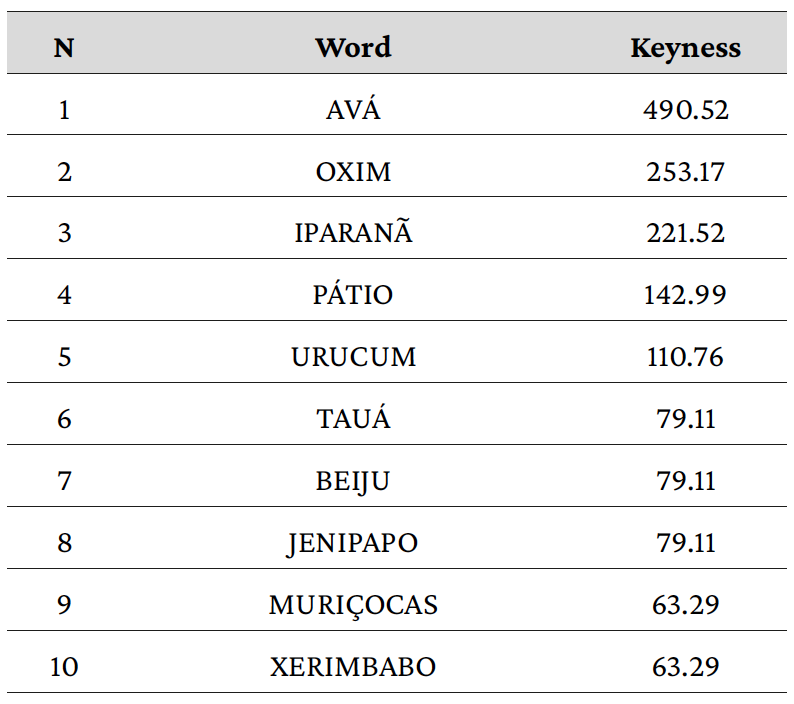
Table 13: Ten most frequent words of learners' translations for A Mirixorã e o sariguê. Source: Created by the authors
As can be seen in Table 13, there is a reuse of the anthropological and terminological habitus by the apprentices, as they recover the vocabulary related to political and religious leaders of the "tribe", "Avá" and "oxim". They also reuse denominations of ritual places, such as the "courtyard" and of natural spaces, such as the "Iparanã". In this context, Table 14 shows some examples of terms as used by learners in the form of loans:
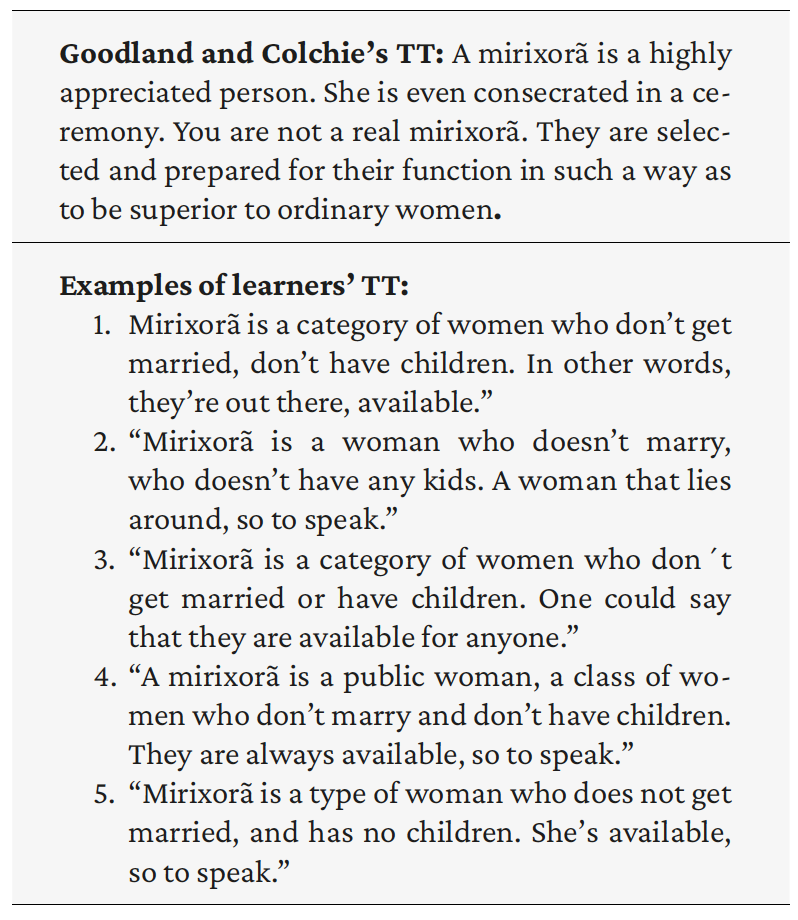
Table 14: Examples of contexts of loanwordsused by learners. Source: Created by the authors
Finally, we find that, in general, by choosing to loan terms as part of their translational behaviour, students not only assimilated translational habitus at its various levels, but also gained awareness of their social role as promoters of new meanings.
Looking for loanwords which appeared in translation options as more recurrent both in frequency and keyness lists, apprentices also developed a tendency to associate such terms with other explanatory words, following the principles adopted in the professionals' TT. It seems that they also followed some premises and behaviours that were presented to them, in addition to expanding the range of possible solutions.

Table 15: Loanwords and variation in learners’s TT. Source: Created by the authors
Upon finding great use of anthropological terms in the chapter they translated, students were able to put into practice the different strategies verified with the help of data from the parallel corpus. Besides, we believe that they established the relationships between loanwords and variations and sought to determine similar references, building an interaction of meanings and composing new meanings, as we propose with the habitus hypothesis.
CONCLUSION
As we presented in this paper, the concept of habitus allows students to reflect upon choices and possible explanations for the translation of terminologies. Besides, it reformulates the conduct to offer new standards to TTs.
The involvement in a collectivised decision-making environment concerning the use of corpus comprises experimentation, evaluation and discussion about strategies previously by other translators. Therefore, a corpus could elucidate the cultural structures brought by the terms and allow the learners to develop a process of socialisation of behaviours. Through social representations, the student finds ways of using translational habitus.
We consider that, when dealing with corpora, we lead the interpretation of translators for the proposition of an acquired system of predilections and enduring standardisations that are products of shared frameworks which are factors of a translational habitus. By verifying how professional translators have developed a new sense of organisation for terms related to Anthropology and their attributes in indigenous society, students can adjust their knowledge, conduct, beliefs and interpretation to what is presented to them by the corpora.
The results support Bowker’s theory that, by using corpora, we can perpetuate a terminological behaviour. Consequently, we assume that by considering the choices made before and replicating them, the students really value the idea of sharing the same strategies and keeping a specialized language.
Therefore, clarification and elucidation that there is a professional habitus (Perrenoud, 2002) consists of realistic experimentation of the act of translating, favouring the decision-making about this habitus.
We believe that the use of terms in STs and TTs is thus assimilated and internalized by the students, confirming Bourdieu’s ideas (1983) that practice is a product of the interaction between the situation and the habitus, allowing students to assume characteristics of variation and loanwords, which are analogical transfers of socially pre-regulated schemes shown by the professional translators.
Corpus Linguistics is associated with this prerogative in allowing students to have contact with the interaction of habitus in action. As presented by Simeoni (1998) and Gouanvic (2005), individuals operate within groups, which in turn condition a particular habitus or even a set of durable dispositions that are linked to the history of human beings as well as their particular uses.
We found that the use of corpora products helped learners to see the meaning correlations that terms tend to have within an area of expertise. In the classroom, the use of corpora showed that translation encompasses not only transferring words from source to target languages but also dealing with a whole network of similarities and differentiations that are clarified by the use of lists of frequent words and keyness.
Habitus dispositions, therefore, permeate the recognition of possible translations for isolated terms; they characterise the relationships and meanings that the terminology of Social Sciences establishes within its borders, both in ST and TT. Knowing theories about habitus and becoming aware of its usefulness favours the translation training in a pedagogical procedure of analysis of the conjunctures by which terminological production and reproduction are configured.
Consequently, the use of corpora in this initial educational experiment for the teaching professional translation activities extends the investigation of habitus and includes it in some investigations about frequency and reproduction of speciality language elements.
The procedures of Corpus Linguistics allowed the observation of how this system of social relationships that is clearly shown through the use of frequent terms in the area of Anthropology can be organized to be taught and absorbed by students, creating a procedure to analyse some aspects of habitus. We consider this is the beginning of a relationship established between not only Translation Studies and Sociology, but also Corpus Linguistics and Terminology. It would be a possible dialogue for a new methodological approach to professional habitus.
References
Baker, Mona (1995): “Corpora in translation studies: an overview and some suggestions for future research”, Target,7/2, 223-243.
Barros, Lídia Almeida (2004): Curso básico de terminologia, São Paulo: USP.
Beaugrande, Robert (2001): “Large corpora, small corpora and the learning of language”, in Mohsen Ghadessy, Alex Henry and Robert L. Roseberry (eds.), Small corpus studies and ELT: theory and practice, Amsterdam: John Benjamins, 3-28.
erber Sardinha, Tony (2004): Linguística de corpus, São Paulo: Manole.
Biber, Douglas, Ulla Connor and Thomas Upton (2007): Discourse on the Move: Using corpus analysis to describe discourse structure, Amsterdam: John Benjamins.
Bourdieu, Pierre (1983): “Esboço de uma teoria de prática”, in Renato Ortiz (ed.), Pierre Bourdieu, São Paulo: Ática.
Bourdieu, Pierre (1982): Ce que parler veut dire. L'économie des échanges linguistiques, Paris: Fayard.
Bowker, Lynne (1999): “Exploring the potential of corpora for raising language awareness in student translators”, Language Awareness, 8/3-4, 160-172.
Camargo, Diva Cardoso de (2007): Metodologia de pesquisa em tradução e lingüística de corpus, São Paulo: Cultura Acadêmica.
Díaz Fouces, Óscar (1999): Didáctica de la traducción (português – español),Vigo: Servicio de Publicacións da Universidade de Vigo.
Díaz Fouces, Óscar (2001): “Sociologia de la traducción”, Quaderns: Revista de traducció 6, 63-77.
Faulstich, Enilde (2002): “Variação em terminologia: aspectos de socioterminologia”, en Gloria Guerrero Ramos y Manuel Pérez Lagos (eds.), Panorama actual de la terminología. Granada: Comares, 65-91.
Gabrielatos, Costas (2007). «If-conditionals as modal colligations: A corpus-based investigation». In: DAVIES, Matthew, et.al. (Eds.), Proceedings of the Corpus Linguistics Conference. Birmingham: University of Birmingham.
Gabrielatos, Costas and Tony McEnery (2005). «Epistemic modality in MA dissertations». En: OLIVEIRA, Pedro Fuertes Olivera (Ed.), Lengua y Sociedad: Investigaciones recientes en lingüística aplicada. Lingüística y Filología no. 61. (pp. 311-331). Valladolid: Universidad de Valladolid.
Gouavinc, Jean-Marc (2005). «A Bourdieusian Theory of Translation, or the Coincidence of Practical Instances: Field, ‘Habitus”, Capital and ‘Illusio”». 11 (2), p. 147-166.
Ghadessy, Mohsen, Alex Henry and Robert Roseberry (eds.) (2001): Small Corpus Studies and ELT: Theory and practice, Amsterdam-Philadelphia: John Benjamins.
Hurtado Albir, Amparo (2005): “A aquisição da competência tradutória: aspectos teóricos e didáticos”, in Fabio Alves, Célia Maria Magalhães and Adriana Pagano (eds.), Competência em Tradução: cognição e discurso, Belo Horizonte: UFMG, 19-57.
Hurtado Albir, Amparo (1993). “Un nuevo enfoque de la didáctica de la traducción. Metodología y diseño curricular », in Roser Gauchola, Claude Mestreit and Manuel Tost Planet (eds.),. Les langues étrangères dans l’Europe de l’acte Unique, Barcelona : ICE Universitat Autònoma de Barcelona.
Inghilleri, Moira (ed.) (2005): Bourdieu and the Sociology of Translation and Interpreting, The Translator, 11/2.
PACTE (2000): “Acquiring Translation Competence: Hypotheses and Methodological Problems in a Research Project”, in Allison Beeby, Doris Ensinger and Marisa Presas (eds.), Investigating Translation, Amsterdam: John Benjamins, 99-106.
PACTE (2001): “La Competencia traductora y su adquisición”, Quaderns. Revista de Traducció, 6, 39-45.
PACTE (2002): “Una investigación empírico-experimental sobre la adquisición de la competencia traductora”, in Amparo Alcina Caudet and Silvia Gamero Pérez (eds.), La traducción científico-técnica y la terminología en la sociedad de la información, Castellón de la Plana: Publicacions de la Universitat Jaume I, 125-138.
PACTE (2014): “First Results of PACTE Group's Experimental Research on Translation Competence Acquisition: The acquisition of declarative knowledge of translation”, MonTI: Monografías de Traducción e Interpretación, 1, 85-115.
PACTE (2015): “Results of PACTE’s Experimental Research on the Acquisition of Translation Competence: The acquisition of declarative and procedural knowledge in translation. The Dynamic Translation Index”, Translation Spaces, 4/1, 29-53.
Perrenoud, Phillipe (2002): Prática Reflexiva no oficio de professor: profissionalização e razão pedagógica. Porto Alegre: Artmed.
Perrenoud, Phillipe et. al. (2001): “O trabalho sobre o habitus na formação de professores: análise das práticas e tomada de consciência”, in Phillipe Perrenoud et.al. (eds.), Formando professores profissionais: Quais estratégias? Quais competências?, Porto Alegre: Artmed.
Ribeiro, Darcy (1976): Maíra, Rio de Janeiro: Civilização Brasileira.
Ribeiro, Darcy (1985): Maíra, transl. E.H. Goodland and Thomas Colchie, London: Pan Books.
Rodríguez Inés, Patricia (2013): “Electronic Target-Language Specialised Corpora in Translator Education”, Babel, 59/1, 57-75.
Scott, Michael (2011): WordSmith Tools Manual: Version 6, Liverpool: Lexical Analysis Software Ltd.
Serpa, Talita (2017): Os estudos de corpora na tradução em diálogo com a sociologia da educação: formação de um habitus tradutório com subsídios de brasileirismos das obras de Darcy Ribeiro, unpublished doctoral research, São Paulo State University: São José do Rio Preto, Brazil.
Simeoni, Daniel (1998): “The Pivotal Status of the Translator’s Habitus”, Target,10/1), 1-39.
Sinclair, John (1991): Corpus, Concordance, Collocation,Oxford: Oxford University Press.
Tognini-Bonelli, Elena (2001): Corpus linguistics at work. Amsterdam-Atlanta: John Benjamins.
Toury, Gideon (1978): “The nature and role of norms in literary translation”, in James Holmes, James, Joseph Lambert and Raymond Van den Broeck (eds.), Literature and translation,Leuven: ACCO, 83-100.
Varantola, A, K. (2003): “Translators and disposable corpora”, in Federico Zanettin, Silvia Bernardini and Dominic Stewart (eds.), Corpora in Translator Education, Manchester: St. Jerome, 55-70.
Wolf, Michaela (2010): “Sociology of translation”, in Yves Gambier and Luc van Doorslaer (eds.), Handbook of translation studies, Amsterdam-Philadelphia: John Benjamins, 1, 337-343.
Zanettin, Federico (1998): “Bilingual comparable corpora and the training of translators”, Meta, 43/4, 616-630.
Zanettin, Federico, Silvia Bernardini and Dominic Stewart (2003): Corpora in translator education, Manchester: St. Jerome.
1 We believe that there are many other elements in habituscomposition, as Wolf (2010) points out in their studies. However, in our analysis, we intend to focus only on the aspects that can be quantified by Corpus Linguistic methodologies.
2 Anthropology is just one of the fields in which we can observe habitus. We are using it as an example because of the variety of terms and possibilities of variation.
3 a frequência é um atributo inseparável da palavra, pois revela a sua ocorrência observada em uso. A frequência de uso (alta, baixa, intermediária, etc.) tem um papel definidor da palavra, fornecendo a ele um traço tão inseparável quanto o sentido. [We are responsible for all the translations presented in the theoretical items of this paper]
4 The reference corpora in our research were, respectively, in Portuguese, the Lácio-Ref, developed at the São Paulo University and the BNC Sampler, developed at Lancaster University.
5 termo é [...] um modelo de realização lexical no texto. Seu caráter de termo se dá pelo fato de que designa um conceito específico de um domínio de especialidade.
6 os termos, no meio linguístico e social, são entidades passíveis de variação e mudança e que as comunicações entre membros da sociedade são capazes de gerar conceitos interacionais para um mesmo termo ou de gerar termos diferentes para um mesmo conceito.
7 We know habitus can be analysed through many different aspects and that our proposal is just one possible approach.
8 This nomenclature has changed with the development of PACTE’s research. We can now verify that they divide the competences in: 1) bilingual sub-competence; 2) extralinguistic competence; 3) strategic sub-competence; 4) instrumental sub-competence; knowledge of translation sub-competence; and 6) psycho-physiological components.
9 In this curriculum the students have three disciplines in which they can practice translation. The group selected for this research had expended two or three years translating before our analysis. All the students were Brazilian Portuguese native speakers and had English as a second language. Their level of proficiency could be described among C2 and B2 (Common European Framework of Reference for Languages – CEFR) and they were around 23 years old, with no previous professional experience.
It is important to mention that, despite the fact that we assume these elements can interfere in their habitus, we tried to observe their choices without considering these factors and focusing only on their relationship with the corpus.
10 The curricula in Brazilian Undergraduation Courses for Translation Practice normally involve translating texts from native language to the second language.
11 It is important to emphasize that the activity presented in our paper was developed with parts of the novel Maíra because the students would not have time to translate the complete work.
12 In our research we also checked compound terms; however, for this paper, we focused on the results about single terms.
13 For the development of our lists and contexts, we used the software WordSmith Tools (version 6.0) and its tools WordList, Keywords and Concord.
14 Despite the fact that frequency and keyness are important for a research based on corpora, in this paper they were instruments to select the terms and to observe the replication of its uses by the students and to consider the similarities between their behaviours and those of professionals. Another research would be necessary to analyse the ideas behind the statistics.